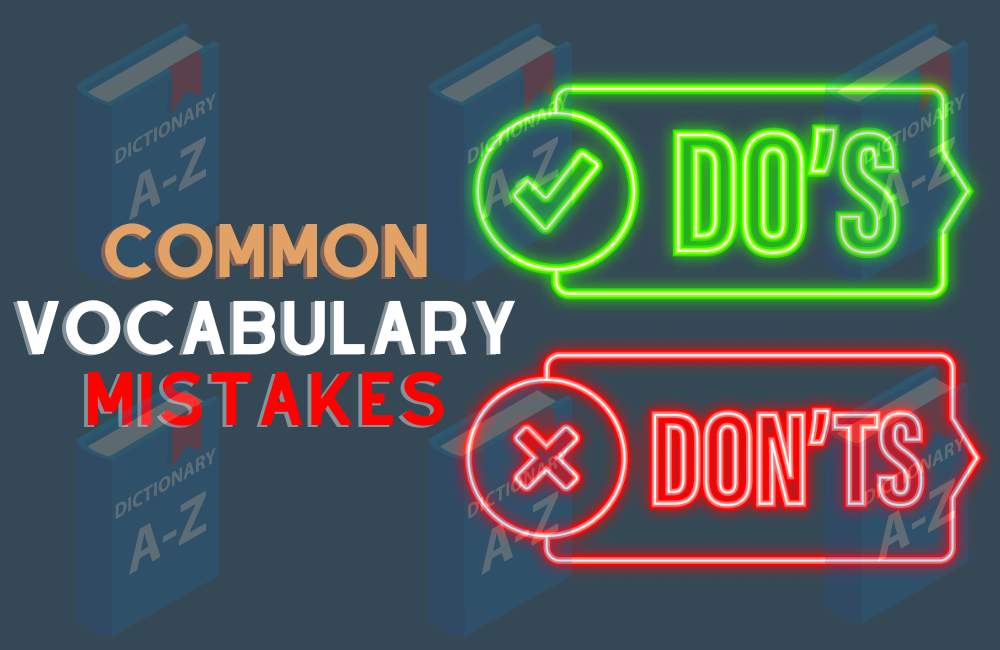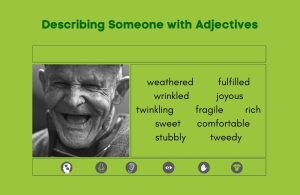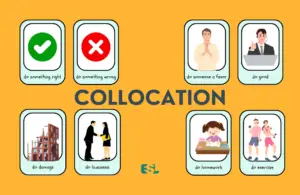This article covers the following areas –
- 1. Understand the Importance of Context
- 2. Avoid Confusing Homophones and Homonyms
- 3. Use Fancy Words Correctly
- 4. Master Common Collocations
- 5. Use Prepositions Correctly
- 6. Avoid Overgeneralizing Verb Tenses
- 7. Avoid Direct Translations
- 8. Identify and Avoid False Friends
- 9. Use Modals Appropriately
- 10. Maintain Proper Word Order
- 11. Use Gerunds and Infinitives Correctly
- 12. Ensure Consistent Plural Forms
- 13. Differentiate Adjectives and Adverbs
- 14. Distinguish Countable and Uncountable Nouns
- Final Thoughts
- Let’s Practice Now -Quiz!
- Frequently Asked Questions
Mastering correct vocabulary usage can be challenging. Therefore, in this guide, I’ll provide some practical tips to help you overcome these challenges. Let’s begin the journey to improve your correct vocabulary usage skills with these easy-to-follow tips, examples, and interactive quizzes.

Avoiding mistakes in vocabulary usage involves understanding context, mastering collocations, and using the correct verb forms. Common errors like confusing adjectives and adverbs or misusing gerunds can hinder communication.
Now, we will delve into each common mistake in vocabulary usage and provide actionable tips to avoid them. You’ll find examples and practical advice to help you master correct vocabulary usage, ensuring your English sounds natural and accurate.
1. Understand the Importance of Context
Understanding the importance of context in language is crucial. Words can change meaning based on how they’re used. For example, “bear” can mean a large animal or to endure something, while “lead” can mean to guide or a type of metal. These differences highlight why context is key.
Using words correctly in context helps avoid misunderstandings. A misplaced word can change your entire message. Choosing the right word for the situation can make your communication clearer and more effective.
Context also enriches your expressions. The correct word in the right setting adds depth and nuance. This makes your statements more engaging and meaningful, allowing you to convey precisely what you intend.
To master context, engage in active listening. Notice how words are used in conversations, movies, and songs. This practice helps you understand the nuances of different contexts and improves your language skills.
Reading widely also helps. Different genres provide varied contexts, enriching your vocabulary and understanding. Practice with feedback from native speakers to get immediate corrections and learn how to use words contextually. This approach will make your English more natural and effective.
2. Avoid Confusing Homophones and Homonyms
Homophones, homonyms, and homographs add complexity to English. Homophones sound alike but have different meanings, like “knight” (warrior) and “night” (opposite of day). Understanding these words helps in clear communication and avoids confusion.
Homonyms share the same spelling or pronunciation but have different meanings, such as “bark” (dog sound) and “bark” (tree covering). Mastering homonyms can enhance your writing by adding depth and nuance.
Homographs are words spelled the same but may sound different and have different meanings, like “tear” (cry) and “tear” (rip). Recognizing these helps in both writing and speaking confidently.
Clear communication depends on using the right word in the right context. Misusing these words can lead to misunderstandings. Frequent practice and using memory aids can help you master these words effectively.
Understanding homophones, homonyms, and homographs is like solving a puzzle. Viewing them as challenges to be conquered can make learning English more engaging and rewarding. This skill boosts your confidence in using English accurately.
3. Use Fancy Words Correctly
Using fancy words can enhance communication, but misuse can cause confusion. For example, “enervate” means to drain energy, not energize. Misunderstanding these words can lead to miscommunication. It’s important to understand the context in which a word is typically used before using it.
“Inflammable” means the same as “flammable,” despite sounding like it shouldn’t catch fire. Misusing such words can distort the intended message. Practice using new vocabulary in conversations and seek feedback to ensure correct usage.
“Pernicious” might sound positive but means harmful. Overcomplicating language with fancy words can make communication less effective. Simple words are often more precise and effective. Always prioritize clarity over trying to impress with advanced vocabulary.
High-level vocabulary can enrich expression and leave a lasting impression. However, using a word without fully understanding its meaning can make you seem pretentious. Communication should aim to convey ideas clearly and accurately. Staying humble and focusing on clarity is key.
Fancy words should be used with care and understanding. Embrace the richness of the English language, but remember that effective communication is about conveying your message well. Use advanced vocabulary appropriately to enhance your language skills and confidence.
4. Master Common Collocations

Collocations are essential for natural and fluent English. Words like “make a decision” instead of “do a decision” sound right to native speakers. These combinations help avoid confusion and make speech and writing more engaging and understandable.
Using correct collocations ensures clarity. For instance, “catch someone’s attention” is preferred over “take someone’s attention.” Misusing collocations can lead to awkward or funny mistakes. Learning them improves your communication.
To master collocations, immerse yourself in English media like movies and music. This helps you pick up natural word pairings. Writing and getting feedback from native speakers also helps reinforce correct usage.
Practice with flashcards of common collocations to remember them better. Engage in conversations with native speakers to hear and use collocations naturally. Repetition and exposure are key to mastering them.
Learning collocations is like learning the rhythm of a dance. It might be tricky at first, but your language will flow naturally with practice. Understanding and using collocations will make your English sound more like a native speaker’s.
5. Use Prepositions Correctly

Prepositions are small words but can cause significant problems for ESL learners. They change the meaning of sentences, like “in the bus” vs. “on the bus.” Prepositions describe relationships such as location, time, and direction, making them crucial for clear communication.
Different regions use prepositions differently. For example, “wait for a bus” is standard, while “wait on someone” can mean serving them in American English. Learning these nuances is essential for sounding native-like.
Visual aids like diagrams can help understand prepositions. Practice using prepositions in full sentences rather than in isolation. Consistency and feedback from conversations are key to mastering their usage.
Common prepositional mistakes include “live in” for cities and “live at” for specific addresses. Another is “different from” vs. “different than.” Knowing these helps avoid misunderstandings. With practice, patience, and exposure, navigating prepositions becomes intuitive.
Related > Preposition of Time: At, On, and In
6. Avoid Overgeneralizing Verb Tenses

Overgeneralizing verb tenses can lead to imprecise communication. Tenses like present perfect or past perfect continuous add nuance, pinpointing when an action occurred. For instance, “I went to Paris” (past) vs. “I have gone to Paris” (experience). Accurate tense usage enhances clarity.
Tenses are crucial for storytelling. Switching between tenses correctly makes narratives engaging. For example, knowing when to use simple past or present perfect keeps the story clear. This is important for both written and spoken English.
Daily interactions also rely on correct tense usage. Using the right tense in job interviews or presentations ensures clear communication. For example, “I read books” (general habit) vs. “I am reading a book” (current activity) shows different meanings.
Common mistakes include confusing simple past with present perfect, or simple present with present continuous. Visual aids like timelines can help understand when actions take place. Practice by forming full sentences and short stories using different tenses.
Regular feedback from proficient speakers helps improve tense usage. Engaging with dynamic learning tools like apps and quizzes can make learning tenses fun and effective. Immersing yourself in varied English media and practicing consistently makes using tenses more intuitive.
Related > Master the Right Form of Verbs: 10 Essential Rules with Examples
7. Avoid Direct Translations
Direct translations from your native language to English can lead to confusion or humorous mistakes. Languages have unique idioms and structures that don’t always translate well. For example, “the spirit of the staircase” in French means thinking of a clever comeback too late.
Cultural specifics play a big role in translation. Some phrases are deeply rooted in culture and may not have a direct English equivalent. Understanding these differences is key to effective communication.
Languages also differ in structure. Sentence order and word usage vary, making direct translation difficult. Learning the natural structure of English sentences helps avoid awkward phrasing.
Idiomatic expressions often lose their meaning when translated directly. For example, the Chinese phrase “horse horse tiger tiger” means something is mediocre. Knowing idioms in context is essential for fluency.
Think in English and immerse yourself in the language to avoid direct translation mistakes. Interacting with native speakers and consuming English media can help you learn natural phrasing and idiomatic usage. This approach improves your communication skills and helps you sound more fluent.
8. Identify and Avoid False Friends
False friends are words that look or sound similar in two languages but have different meanings. For ESL learners, they can cause confusion and miscommunication. For example, “embarazada” in Spanish means “pregnant,” not “embarrassed.”
These words exist due to shared linguistic origins, coincidental similarities, or modern borrowings. Awareness of false friends is key. Recognizing them helps avoid mistakes and improves communication.
Notorious false friends include “gift” in German, which means “poison,” and “sensible” in Italian, which translates to “sensitive.” Knowing these differences is crucial for accurate language use.
To tackle false friends, maintain a personalized vocabulary list. Contextual learning helps understand words in sentences, clarifying meanings. Engaging with native speakers and using language apps can provide real-time feedback and highlight common false friends.
Embrace the challenge of false friends, as they offer insights into language quirks. Awareness, practice, and proactive learning can help navigate these linguistic traps, strengthening and enhancing your language skills.
9. Use Modals Appropriately

Modals are essential in English. They express ability, likelihood, obligation, or requests. For instance, “can” indicates ability (“I can swim”), while “might” shows possibility (“It might rain”). Overusing certain modals can make speech sound awkward or unclear.
Using “can” for formal requests can seem impolite. Instead, use “could” or “may” for politeness (“Could you pass the salt?”). This subtle change improves communication in formal settings.
Confusing “can” with “may” is common. “Can I leave early?” questions ability, while “May I leave early?” seeks permission. Knowing these differences enhances clarity and appropriateness.
Diversify your modal usage to avoid overreliance. Practice in varied scenarios, such as role-playing formal requests or giving advice. This helps you become comfortable with the appropriate use of different modals.
Listening to native speakers and consuming authentic content like podcasts or books exposes you to natural modal usage. Regular feedback from proficient speakers can also highlight areas for improvement, ensuring effective and nuanced communication.
10. Maintain Proper Word Order
Incorrect word order can disrupt the meaning of sentences in English. Typically, English follows a Subject-Verb-Object (SVO) structure. For example, “I (subject) love (verb) chocolate (object).” Keeping this order ensures your sentences are clear and understood.
Modifiers like adverbs often precede the main verb but follow the verb “to be.” For instance, “He often reads” vs. “He is often late.” Correctly placing modifiers avoids confusion and keeps your sentences accurate.
Forming questions involves inverting the subject and auxiliary verb. Instead of saying, “You are coming?” say, “Are you coming?” This inversion is essential for proper question formation and clear communication.
Native language influences can cause incorrect word order in English. For example, a German speaker might say “I can English speak,” which mirrors German structure. Regular practice and exposure to English help align your sentences with English norms.
Use tools like grammar checkers and engage in conversations with native speakers for real-time feedback. Reading books and articles exposes you to correct word order, making it easier to mimic and internalize. With practice, proper word order becomes intuitive.
Related > Order of Adjectives: Examples & Tips
11. Use Gerunds and Infinitives Correctly

Gerunds and infinitives are vital for variety and precision in English. A gerund is the -ing form of a verb functioning as a noun, like “Swimming is good for health.” An infinitive is the base form of a verb preceded by ‘to,’ such as “To travel is to live.” Knowing when to use each is crucial for clear communication.
Gerunds appear after certain verbs and prepositions, like “I dislike waiting.” Infinitives follow certain verbs and adjectives, like “She wants to dance.” Using them correctly avoids common errors and enhances your language skills.
Common mistakes include direct translation errors and misunderstanding verb patterns. For example, “I suggest to go” should be “I suggest going.” Simplifying sentences can also prevent overcomplication, like using “He likes playing soccer” instead of “He likes to play soccer.”
To master gerunds and infinitives, create lists of verbs that pair with each, and practice regularly. Engage with authentic content like articles and videos to see natural usage. Seeking feedback from native speakers or teachers can help correct mistakes and improve your skills.
Think of gerunds and infinitives as unique tools in your language toolkit. With practice, you can understand their roles and use them effectively. Over time, you’ll harmonize them beautifully in your English communication, making your sentences clear and accurate.
Related > Gerunds in English Grammar: A Complete Guide for ESL Learners
12. Ensure Consistent Plural Forms
Inconsistent plurals can be tricky in English. While many nouns form plurals by adding -s, irregular plurals follow different rules. Words like “man” become “men,” and “child” becomes “children.” Some nouns, like “sheep,” remain the same in both singular and plural forms.
Mistakes often occur when applying regular plural rules to irregular nouns, leading to errors like “mouses” instead of “mice.” Foreign-origin words, such as “cactus” becoming “cacti,” add another layer of complexity. Understanding these exceptions is crucial for proper usage.
Strategies to master plurals include using cheat sheets for irregular forms and immersing yourself in English media. Regular practice and feedback help solidify correct usage. Mnemonic devices can also aid memory, making tricky plurals easier to remember.
Learning English plurals involves embracing irregularities and practicing consistently. Over time, even the most confusing plurals will become familiar and easier to use correctly.
13. Differentiate Adjectives and Adverbs

Adjectives describe nouns, answering ‘What kind?’ or ‘Which one?’ like in “a beautiful flower.” Adverbs modify verbs, adjectives, or other adverbs, answering ‘How?’, ‘When?’, ‘Where?’ and ‘How often?’ like “She sings beautifully.”
A common mistake is using an adjective instead of an adverb. For example, saying “She looks beautifully” instead of “She looks beautiful.” Remember, many adverbs end in -ly, which can help you spot them.
Positioning in sentences also differs. Adjectives come before nouns or after linking verbs, while adverbs are more flexible. Practicing with lists and engaging in native content helps internalize correct usage.
Frequent errors include forgetting the -ly ending for adverbs or overusing simple adverbs like “very.” Using strong adjectives instead can improve your language skills. Feedback from native speakers and using visual aids can further enhance your understanding.
Related > Differences between Adjectives and Adverbs
14. Distinguish Countable and Uncountable Nouns
Countable nouns are individual items you can count, like “cat” (cats) and “book” (books). They use quantifiers like “many,” “few,” and “several.” For example, “She has many books.” Understanding countable nouns helps in constructing clear and accurate sentences.
Uncountable nouns refer to masses or concepts you can’t count individually, like “water” and “advice.” They use quantifiers like “much” and “little.” For instance, “She has much patience.” Recognizing uncountable nouns ensures proper usage in sentences.
Common mistakes include using the wrong quantifier or making uncountable nouns plural, such as saying “informations” instead of “information.” Avoid using indefinite articles with uncountable nouns, like “a furniture” instead of “a piece of furniture.”
To master countable and uncountable nouns, make lists of common examples and practice using them. Engage with authentic materials like articles and videos to see correct usage in context. Quizzing yourself can also reinforce learning.
Mastering countable and uncountable nouns ensures your English sounds natural and correct. Regular practice will build your confidence in using these nouns accurately. With conscious effort, you’ll navigate English grammar with ease.
Final Thoughts
Mastering English vocabulary is challenging due to its rich lexicon and nuanced structure. Recognizing common mistakes is the first step to improvement. This article highlights prevalent vocabulary errors and provides strategies to correct them, helping learners communicate more effectively.
Understanding and avoiding these pitfalls boosts confidence in using English. By identifying areas of difficulty, learners can focus on improving specific skills. This approach ensures that their language usage is both accurate and articulate.
Continuous learning and mindful practice are crucial. Regularly engaging with English content and seeking feedback helps solidify understanding. This dedication leads to steady improvement and greater fluency.
Whether a novice or nearing fluency, the journey of mastering English vocabulary is ongoing. Embrace the challenge and use the strategies discussed to enhance your language skills. This commitment to learning will pave the way for linguistic excellence.
Let’s Practice Now -Quiz!
Frequently Asked Questions
Understanding context improves vocabulary usage by using words correctly based on surrounding words and situations. This helps avoid misunderstandings and makes communication more natural and effective.
Avoiding confusion with homophones and homonyms is important because it ensures clarity in communication. Using the correct word prevents misunderstandings and keeps the message clear.
Using fancy words incorrectly can lead to confusion and reduce communication effectiveness. To avoid misunderstandings, it is important to know the exact meaning and appropriate context of advanced vocabulary.
Collocations are pairs or groups of words that commonly go together. Using collocations correctly makes speech and writing sound more natural and fluent, improving overall communication.
Using prepositions correctly is crucial because they show relationships between elements in a sentence. Incorrect preposition usage can change the meaning of a sentence and lead to confusion.
Overgeneralizing verb tenses can cause issues by making sentences less precise. Using the correct tense allows for clear communication about when an action took place, improving the accuracy of the message.
Direct translations should be avoided because they can lead to errors and unnatural phrasing. Languages have unique idioms and structures; understanding these differences ensures better communication.
False friends are words that look or sound similar in two languages but have different meanings. Identifying false friends prevents misunderstandings and ensures accurate communication.
Maintaining proper word order improves sentences by making them clear and easy to understand. Following the standard Subject-Verb-Object order ensures that the intended meaning is conveyed accurately.
Correct usage of gerunds and infinitives is important because they function differently in sentences. Correct usage ensures the sentence structure is accurate and the intended meaning is clear.







